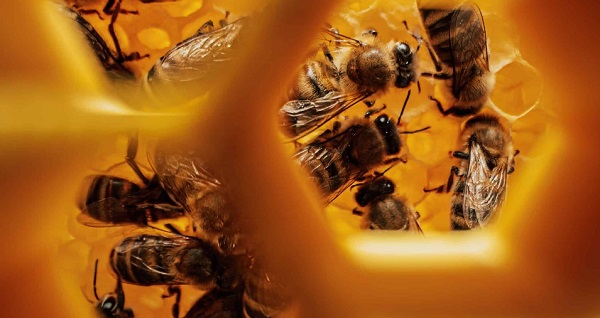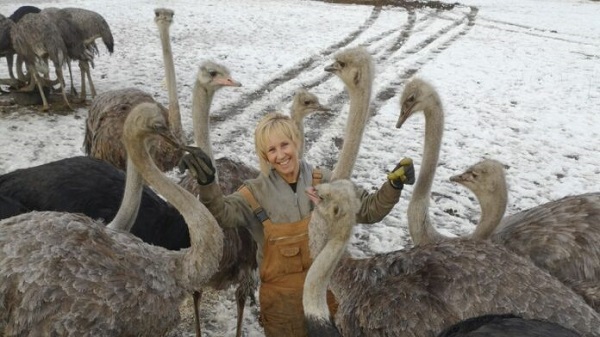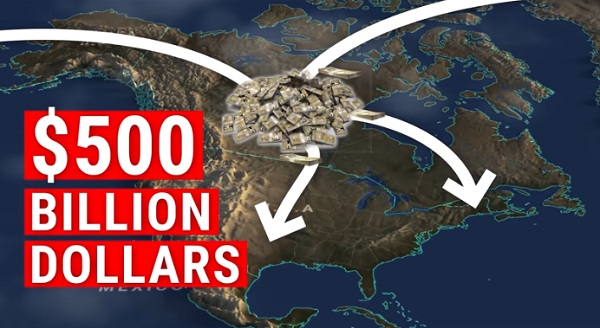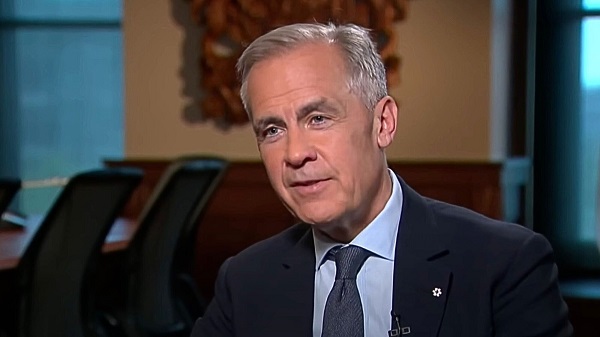Agriculture
Canadian Federal Government Taking Measures to Reduce Impact of COVID-19 on Agriculture

Canadian Federal Government Taking Measures to Reduce Impact of COVID-19 on Agriculture
On April 13, the Canadian Federal Government announced the distribution of federal funds to assist farms in paying temporary workers. This monetary assistance helps compensate workers during the quarantine.
Canada, especially Western Canada, is grappling with the new reality of the COVID-19 pandemic and its impact on the 2020 growing season. Western Canada accounts for over 80% of farmable land, and the industry is heavily reliant on beef and pork exports, especially to the United States. With production and processing facilities shut down, companies are experiencing complications in distribution, which may have a significant impact on the supply chain in the upcoming months.
Labour shortages are the main issue for most farms, both in the field and in processing facilities. Many enterprises are reliant on migrant farmworkers, who travel seasonally to Canada, primarily from Mexico and Jamaica. With many farms experiencing a delay in worker arrivals and a decrease in the number of workers available, perishable crops are especially susceptible to production issues down the road.
Labour Shortages
Over 60,000 temporary, seasonal workers migrate to Canada annually for employment. Many workers are employed by the same farm year after year, receiving industry-specific training from vegetable production to winemaking. For farmers who rely on this labor, the past few weeks have been incredibly difficult. Especially when dealing with perishable crops, labor shortages can be the deciding factor in a crop’s. For one farmer, a field of asparagus is worth $40,000. But without the necessary labor to harvest, the crop will go to waste.
Labour shortages in Canadian agriculture are especially tricky because there is no natural alternative. Many farmers already express frustration with the system, since the main reason they employ temporary migrant workers is because it is nearly impossible to find Canadians who want the job. Agricultural labor can be incredibly hard work and involves significant training.
Trained employees are familiar with all aspects of the business, including the proper use of equipment, which can be a tricky skill to master. As unemployment rises in response to COVID-19 business shutdowns, it may seem like an obvious solution to employ people on farms. But most people lack the skills necessary, and farmers do not have the time or resources to train them quickly.
New Funding
As a possible solution, the Canadian Federal Government proposed new funding to assist farms struggling with income disruption as a result of the pandemic. However, the effectiveness of the bailout is debatable. Many farmers argue that it is not enough to make a difference. The money is supposed to help pay workers during the shutdown, specifically workers who have recently arrived and are in quarantine.
Because all incoming employees are subject to a two week isolation period, farms are responsible for supplying resources until work can begin. However, migrant worker activists argue that the funds may be misused, allowing farmers to collect the money without providing adequate income for workers. The distribution method may assist farms in the short term, but it is questionable as to how much it will help in the upcoming weeks.
Production Issues
It is still too early to tell the severity of the impact of COVID-19 on Canadian food production. Certain crops, like wheat and soy, are already operated in industrial systems, requiring minimal human contact. However, fruit and vegetable farmers are warning of production issues if they continue to struggle to find workers. Similarly, in the meat industry, beef processing facilities, like Cargill, may struggle to keep up with demand amidst closures.
Before the announcement of new funds for temporary workers, the Canadian Federal Government had initially temporarily banned incoming migrant workers. This decision was quickly reversed due to outcry from Canadian farmers. While the monetary assistance is significant for farm businesses in the short term, more lasting solutions to the labour shortage problem will be required. Without enough workers, Canada is subject to an incredibly volatile market, where production and distribution issues may impact food supply both domestically and internationally.
Next Steps for Canadian Agriculture
The Canadian Federal Government is taking measures to reduce the impact of COVID-19 on agriculture, primarily through the distribution of emergency funds to support farmers during the shutdown. Additional solutions, such as alternative labour resources, are also being considered. However, there has been a mixed response to these efforts.
Some farmers feel like the aid is not enough, while others think that the solutions do not apply to them. Additionally, there has been a growing concern by some activist groups concerning the rights of migrant workers. As the situation unfolds, the role of the Canadian Federal Government will be essential to limiting supply chain disruption and production issues in the next few months.
Read more from Emily Folk

I’m Emily Folk, and I grew up in a small town in Pennsylvania. Growing up I had a love of animals, and after countless marathons of watching Animal Planet documentaries, I developed a passion for ecology and conservation. You can read more of my work by clicking this link: Conservation Folks.
Planet Of The Humans: A Scathing Exposé On The Sacred Renewables Sector
Agriculture
Unstung Heroes: Canada’s Honey Bees are not Disappearing – They’re Thriving

Canada’s Bee Apocalypse began in 2008. That was the year the Canadian Association of Professional Apiculturists (CAPA) first reported unusually high rates of winter bee colony losses. At 35 percent, the winter die-off that year was more than twice the normal 15 percent rate of attrition.
“Successive annual losses at [these] levels … are unsustainable by Canadian beekeepers,” the CAPA warned. This set off an avalanche of dire media reports that now appear on a regular basis. Among the many examples over the years: Huge Honey Bee Losses Across Canada” and “Canada’s bee colonies see worst loss in 20 years”. As each of these stories reminds readers, the disappearance of honey bees will doom our food supply, given their crucial role in pollinating crops including canola, soyabeans, apples, tomatoes and berries.
This year the black-and-yellow striped Cassandras are back at work, with headlines shouting “Scientists warn of severe honeybee losses in 2025” and “The Bees are Disappearing Again”. If it’s spring, the bees must be disappearing. Again.
It is, however, mathematically impossible for any species to be in an allegedly continuous and calamitous state of decline over nearly two decades and never actually reduce in number. For despite the steady supply of grave warnings regarding their imminent collapse, Canada’s bees are actually buzzing with life.
In 2007, according to Statistics Canada, there were 589,000 honey bee colonies in Canada,; in 2024, they reached 829,000, just shy of 2021’s all-time high of 834,000. Figuring a conservative summertime average of 50,000 bees per colony, that means there are approximately 12 billion more honey bees in Canada today than when the Bee Apocalypse first hit.
As for beekeepers, their numbers have also been growing steadily, and now stand at 15,430 – the most recorded since 1988. As CAPA’s report acknowledges, “the Canadian beekeeping industry has been resilient and able to grow, as proven by the overall increase in the number of bee colonies since 2007 despite the difficulties faced every winter.”
How is this possible? As is usually the case where there’s a need to be filled, the market holds the answer.
It is true that Canadian honey bees face a long list of threats and challenges ranging from mites and viruses to Canada’s harsh winters. It is also true that they perform a crucial service in pollinating crops, the value of which is estimated at $7 billion annually. However, this underscores the fact that bees are a livestock bred for a particular agricultural purpose, no different from cattle, chickens or pen-raised salmon. They are a business.
And in spite of its alleged status as an environmental totem, the honey bee isn’t even native to North America. It was first imported by European settlers for its honey-making abilities in the 1600s. Since then, it has been cultivated with deliberate commercial intent – allowing it to outcompete native pollinators such as bumble bees and butterflies even though it is poorly suited to the local winter. (This highlights the irony of all those native-plant pollinator gardens virtuously installed in neighbourhoods across Canada that end up supporting an invasive honey bee population.)
The significance of the bee economy means that when a beehive collapses over the winter for whatever reason, beekeepers have plenty of motivation to regenerate that colony as swiftly as possible. While hives can create their own queens over time, this can be a slow process given the cold Canadian climate. The better option is to simply buy a new queen from a warmer country.
In 2024, Canada imported 300,000 queens worth $12 million, mostly from the U.S., Italy, Australia and Chile. That works out to $40 each. In a miracle of nature, each of these new queens can lay up to 2,500 eggs a day, and each egg takes just two to three weeks to reach full maturity as a worker or drone. It is also possible to import entire “bee packages” that include a queen and 8,000 to 10,000 bees.
As a result, even a devastating 50 percent winter loss rate, something that has occurred only rarely in Canada in individual provinces and never nationally, isn’t necessarily fatal to any beekeeping operation. The beekeeper can purchase imported queens in April, split their existing colonies and be back in business by May or June.
And regardless of the honey bee’s apparent difficulties with Canada’s unforgiving weather (efforts are ongoing to breed a hardier Canadian variant), there’s no shortage of bees worldwide. Earlier this year, the German statistical agency reported the global beehive count rose from 69 million in 1990 to 102 million in 2023. Another study looking back to 1961 by New Zealand researchers found the number of honey bee colonies has “nearly doubled” over this time, while honey production has “almost tripled.” As the New Zealand report observes, “Headlines of honey bee colony losses have given an
impression of large-scale global decline of the bee population that endangers beekeeping, and that the world is on the verge of mass starvation.” Such claims, the authors note, are “somewhat inaccurate.” In truth, things have never been better for bees around the world.
Here in Canada, the ability to import queens from other countries, together with their prodigious reproductive capabilities, backstops the amazing resiliency of the bee industry. Yes, bees die. Sometimes in large numbers. But – and this is the bit the headlines always ignore – they come back. Because the market needs them to come back.
If there is a real threat to Canada’s bee population, it’s not environmental. It’s the risk that unencumbered trade in bees might somehow be disrupted by tariffs or similar bone-headed human interventions. Left on their own, bees have no problem keeping busy.
The longer, original version of this story first appeared at C2CJournal.ca
Agriculture
Canada Greenlights Mass Culling of 400 Research Ostriches Despite Full Recovery from Bird Flu Months Ago

 Nicolas Hulscher, MPH
Nicolas Hulscher, MPH
Federal court upholds CFIA’s reckless cull order—setting a dangerous precedent for the unscientific mass depopulation of genetically important animals.
In March, I interviewed Katie Pasitney of Universal Ostrich and Connie Shields to discuss the alarming implications of the Canadian Food Inspection Agency (CFIA) order to cull 400 research ostriches at Universal Ostrich Farm in British Columbia over bird flu:
Canada Orders Mass Culling of 400 Research Ostriches Over Bird Flu, Refuses to Test Surviving Birds for Natural Immunity
·The Canadian Food Inspection Agency (CFIA) has ordered the culling of 400 ostriches at Universal Ostrich Farm in British Columbia, citing concerns over H5N1 bird flu. However, this decision is not based on sound science and could have serious consequences for both food security and medical research.
Universal Ostrich Farm is a research facility focused on studying the unique antibody-producing capabilities of ostriches. Their research has demonstrated potential in neutralizing viruses, bacteria, and even COVID-19, making it an important contribution to medical science.
In December 2024, the CFIA claimed that two deceased ostriches—which had been lying outside for over 16 hours—tested positive for H5N1 via PCR testing. Just 41 minutes after receiving these results, the CFIA signed an order to cull the entire flock.
The CFIA initially granted the farm an exemption, recognizing the birds as “genetically important.” Later, without clear justification, they reversed this decision, ordering their destruction.
Despite the importance of this research, the CFIA has refused to conduct further testing on the birds and has banned the farm from conducting its own tests, under threat of heavy fines and possible imprisonment. Why is the Canadian government refusing to study the potential antibodies ostriches have developed against H5N1 bird flu?
On January 31, 2025, a court granted a temporary stay of execution, halting the cull. However, the CFIA is appealing this decision, which means the culling could still proceed.
Today, we have received news that the reckless mass cull order will proceed despite their ostriches having already recovered months ago and developed natural immunity against H5N1:

Official Announcement: Federal Court Decision in Universal Ostrich Farms Inc. v. Canadian Food Inspection Agency
Dear friends and supporters,
We are absolutely devastated to share today’s Federal Court decision, issued on May 13, 2025. The court ruled in favour of the Canadian Food Inspection Agency (CFIA), upholding their order to destroy our beloved ostriches and rejecting our plea to save them.
The court’s decision accepted the CFIA’s justification under the Health of Animals Act and their use of the Stamping-Out Policy, which mandates the destruction of animals to control disease outbreaks, regardless of their health status. The court confirmed the CFIA’s approach, prioritizing trade obligations over the welfare of our animals.
In addition, we’ve been ordered to pay $15,000 in CFIA’s legal costs. You can read the full decision here: (2025 FC 878). https://saveourostriches.com/wp-content/uploads/2025/05/JR-T-294-25-and-T-432-25-Final.pdf
We are heartbroken by this outcome and uncertain about the future of our farm. As we navigate this incredibly difficult time, we ask for your patience and continued support. If you are able, please consider making a donation to help us manage the financial and emotional toll this has taken.
Thank you,
Universal Ostrich Farm
http://SaveOurOstriches.com
This deeply misguided decision sets a dangerous precedent for the Canadian government to recklessly depopulate animals at will.
By upholding the CFIA’s reckless cull order, despite the ostriches’ recovery and natural immunity, the court has prioritized trade protocols over scientific inquiry, animal welfare, and the advancement of life-saving medical research.
Epidemiologist and Foundation Administrator, McCullough Foundation
www.mcculloughfnd.org
Please consider following both the McCullough Foundation and my personal account on X (formerly Twitter) for further content.
-

 COVID-1910 hours ago
COVID-1910 hours agoOntario man launches new challenge against province’s latest attempt to ban free expression on roadside billboards
-

 Energy18 hours ago
Energy18 hours agoThis Canada Day, Celebrate Energy Renewal
-

 Business2 days ago
Business2 days agoWhile China Hacks Canada, B.C. Sends Them a Billion-Dollar Ship Building Contract
-

 Alberta1 day ago
Alberta1 day agoSo Alberta, what’s next?
-

 Alberta9 hours ago
Alberta9 hours agoAlberta Next Takes A Look At Alberta Provincial Police Force
-

 Bjorn Lomborg1 day ago
Bjorn Lomborg1 day agoThe Physics Behind The Spanish Blackout
-

 Alberta11 hours ago
Alberta11 hours agoCanadian Oil Sands Production Expected to Reach All-time Highs this Year Despite Lower Oil Prices
-

 Business13 hours ago
Business13 hours agoPotential For Abuse Embedded In Bill C-5







